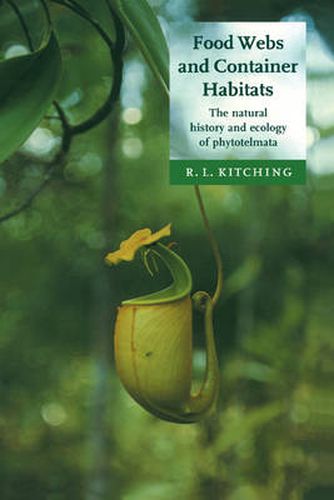Readings Newsletter
Become a Readings Member to make your shopping experience even easier.
Sign in or sign up for free!
You’re not far away from qualifying for FREE standard shipping within Australia
You’ve qualified for FREE standard shipping within Australia
The cart is loading…






The animal communities in plant-held water bodies, such as tree-holes and pitcher plants, have become models for food-web studies. In this book, Professor Kitching introduces us to these fascinating miniature worlds and demonstrates how they can be used to tackle some of the major questions in community ecology. Based on thirty years research in many parts of the world, this work presents much previously unpublished information, in addition to summarising over a hundred years of natural history observations by others. The book covers many aspects of the theory of food-web formation and maintenance presented with field-collected information on tree-holes, bromeliads, pitcher plants, bamboo containers and the axils of fleshy plants. It is a unique introduction to the field naturalist, and a stimulating source treatment for graduate students and professionals working in the fields of tropical and other forest ecology, as well as entomology.
$9.00 standard shipping within Australia
FREE standard shipping within Australia for orders over $100.00
Express & International shipping calculated at checkout
The animal communities in plant-held water bodies, such as tree-holes and pitcher plants, have become models for food-web studies. In this book, Professor Kitching introduces us to these fascinating miniature worlds and demonstrates how they can be used to tackle some of the major questions in community ecology. Based on thirty years research in many parts of the world, this work presents much previously unpublished information, in addition to summarising over a hundred years of natural history observations by others. The book covers many aspects of the theory of food-web formation and maintenance presented with field-collected information on tree-holes, bromeliads, pitcher plants, bamboo containers and the axils of fleshy plants. It is a unique introduction to the field naturalist, and a stimulating source treatment for graduate students and professionals working in the fields of tropical and other forest ecology, as well as entomology.